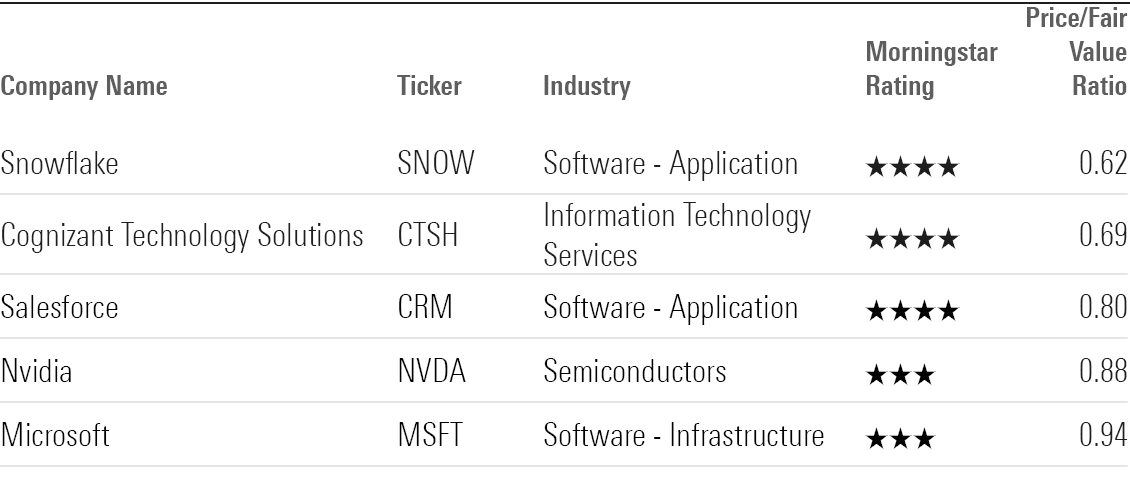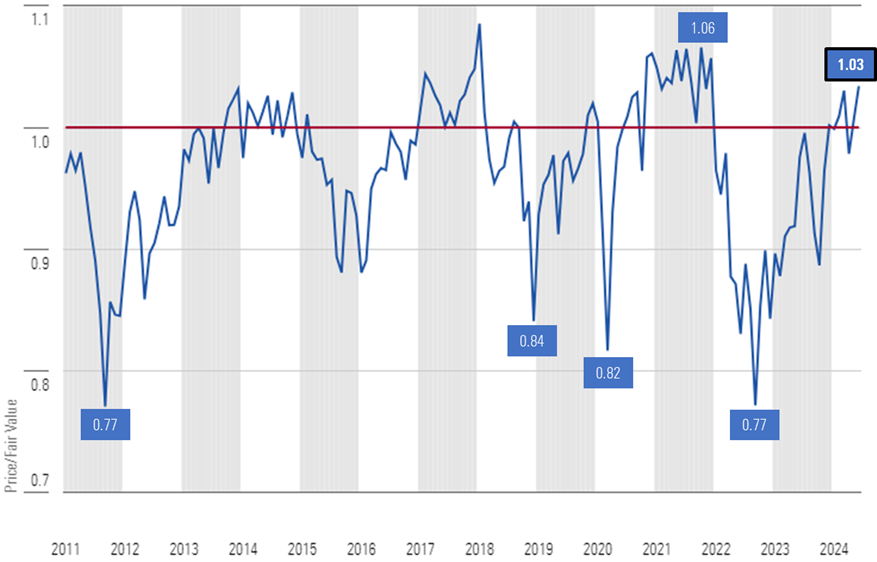20 New Tips On Deciding On AI Stock Predictions Analysis Websites
20 New Tips On Deciding On AI Stock Predictions Analysis Websites
Blog Article
Top 10 Tips For Evaluating The Privacy And Security Of Ai Stock Analysing Trading Platforms
Security and privacy are paramount when using AI stock predicting/analyzing trading platforms since they are often handling sensitive financial information and personal information. Any breach or mishandling of information can result in significant financial losses and reputational harm. Here are 10 best suggestions to evaluate the privacy and security of these websites.
1. Assess the security of your data
Secure transmission of data: Make sure your platform is using secure protocols (e.g., TLS/SSL) to encrypt data transmitted between your device and the servers.
Encryption while in transit Make sure that the data being stored on a server of the platform has been secured using strong encryption standards like AES-256.
Check for end-toend security It is essential if you want to protect sensitive data or communications.
2. Review the authentication mechanisms
Two-factor verification (copyright) : Check whether the platform is compatible with copyright to provide an additional layer of security.
Find out about biometric authentication options available for mobile apps (e.g. facial recognition fingerprint, facial recognition).
Password policy: Determine if the platform enforces strict password policies (e.g. minimum length, complexity requirements).
3. Examine for Regulatory Compliance
Financial regulations: Make sure you are in conformity with the relevant financial regulation (e.g. SEC FINRA MiFID II).
Data privacy laws: Ensure that you adhere to any data privacy laws that apply to your company (if applicable) (e.g. CCPA or GDPR).
Audit certifications. Verify that the platform you are considering has been through third-party assessments of security or certificates.
Review Data Access Controls
Role-based access: Make sure the platform is using role-based access controls (RBAC) to limit data access to authorized users.
Permission levels: Look to see if different members or users of the team have different permissions.
Activity monitoring: Find out whether the platform monitors and logs the user's behavior to detect suspicious behavior.
5. Examine Vulnerability Management
Regular updates: Ensure that your platform is updated with software on a regular basis to patch any vulnerabilities.
Penetration Testing: Verify whether the platform is regularly subjected to penetration tests that identifies and corrects security flaws.
Bug bounty programs: Check whether there's a bug bounty program that is available to encourage security researchers from other sources to share weaknesses.
6. Evaluate Data Privacy Policies
Transparency. Check out the Privacy Policy to find out the nature of data collected and how it is utilized.
Data minimization is the method of ensuring that only data necessary for operation are gathered by an application.
Third-party sharing: Check if the platform shares information with third-party partners and, if so, under what conditions.
7. Secure API use should be inspected
API security: Ensure the API of the platform API uses authenticated methods that are secure (e.g., OAuth, API keys) and secures data exchanges.
Rate limiting: Verify whether the API has rate limits in order to protect against brute force attacks and abuse.
Verify the logs of access. Check that the system tracks API usage and records it to monitor.
8. Review Incident Response and Recovery
Plan for response to an incident Be sure that the platform has a solid plan to handle data breaches and security incidents.
Check the notification policy of the platform. Does it inform users immediately if there is an incident?
Backups of data - Ensure that your platform is equipped with a plan in place for disaster recovery, and that it regularly backs data up.
9. Review Physical Security Measures
Security of the data center: Make sure the platform's servers are hosted in secure data centers with physical security measures (e.g. surveillance, access control).
Redundancy Verify the redundant systems of the platform in order to ensure that data is available in the event of any hardware fails.
Geographic distribution: To enhance resilience, make sure that the data is distributed to several sites.
10. Test privacy controls for users
Data deletion: Ensure that the platform allows you to delete all your personal data when you decide to cease using it.
Privacy settings: Find out if your platform offers privacy settings that control what data can be disclosed or made public.
Anonymization: Check if the data is being used to anonymize for machine learning or analytics.
Bonus Tips
Reviews and feedback from users Review and feedback from users to assess the reputation of a platform for security and privacy.
Trial time: You can avail a demo or a free trial period to test the security and privacy controls.
Customer support: Make sure that the platform provides a solid support for security-related issues or concerns.
You can evaluate the privacy, security as well as the accuracy of AI stock trading platforms by following these tips. This will ensure that your financial information and personal data are safe. A secure platform not just protects assets, but builds trust in their services. Follow the most popular chatgpt copyright for more recommendations including market ai, ai trading tools, ai investing, investment ai, best ai trading app, chatgpt copyright, chatgpt copyright, ai stock picker, using ai to trade stocks, best ai stock trading bot free and more.
Top 10 Tips On Risk Management Of Ai Trading Platforms That Predict/Analyze Stock Prices
Any AI platform for analyzing or predicting stocks must have risk management in place, which is essential to protecting your capital and limiting losses. A platform that has robust tools for risk management can assist you in navigating volatile markets and allow you to make educated choices. Here are the top ten tips for assessing risk management capability of these platforms.
1. Examine Stop-Loss and Take Profit Features
Customizable levels: Ensure the platform lets you determine take-profit and stop-loss limits for individual trades or strategies.
Make sure the platform is able to allow for trailing stops. They will automatically adjust themselves as market moves in your favor.
If the platform has stop-loss order guarantees that your trade is closed at the price specified in markets that are volatile, you can be confident that you will be able to trade successfully.
2. Assessment Position Sizing Tools
Fixed amount. Make sure you have the option to define your position sizes by a fixed dollar amount.
Percentage: Check if you are able to determine your positions' sizes in proportion to the amount of your portfolio. This will allow you to control risk more effectively.
Risk-reward: Find out if your platform lets you determine risk-rewards for each trade or strategy.
3. Make sure you are using Diversification Assistance
Multi-asset trading : Ensure that the platform you choose to use allows you to trade across a variety of asset classes, like ETFs, stocks as well as options. This can help you diversify your portfolio.
Sector allocation: Find out whether your platform provides tools for monitoring and managing the exposure to sectors.
Diversification of geographical areas - Make sure that the platform allows trading on international markets. This can help spread geographical risks.
4. Assess margin and leverage control
Margin requirements: Ensure the platform clearly outlines the margin requirements for trading leveraged.
Find out the leverage limits. This option to manage your exposure to risk.
Margin calls: Ensure that you get timely messages from the platform to avoid account liquidation.
5. Review the risk Analytics Reporting
Risk metrics - Make sure that your platform has important risk indicators like the Sharpe ratio (or Value at Risk (VaR)) or drawdown (or value of the portfolio).
Scenario Analysis: Find out if your platform allows you the capability to simulate different market scenarios to assess possible risks.
Performance reports: Ensure that the platform offers you comprehensive information on the performance of your investments, including returns that are adjusted for risk.
6. Check for Real-Time Risk Monitoring
Monitoring of portfolios - Make sure that the platform you select provides real-time monitoring so that your portfolio is protected.
Alerts and notifications - Check that the platform has sent out alerts at the moment that certain risk-related events occur (e.g. margin breaches or triggers for stop-loss order).
Risk dashboards: Ensure that your platform offers an adjustable risk dashboard that gives you a complete overview of your risk profile.
7. Evaluation of Backtesting and Stress Testing
Test for stress: Ensure that the platform permits you to stress-test your portfolios or strategies in extremely difficult market conditions.
Backtesting: Make sure that the platform supports backtesting strategies based on previous data to determine risk and the performance.
Monte Carlo: Verify the platform's use Monte Carlo-based simulations to evaluate the risks and estimating a range of possible outcomes.
8. Risk Management Regulations: Assess your compliance
Check for regulatory compliance: Make sure that the platform adheres to applicable risk-management regulations (e.g. MiFID II, Reg T, in the U.S.).
Best execution: Make sure that the platform follows the highest standards of execution, and ensures that transactions are executed at the highest possible price, minimizing the chance of slippage.
Transparency: Ensure that the platform offers transparency and clear disclosures of the risks.
9. Examine the parameters of risk that are user-controlled.
Custom Risk Rules: Make sure you have the ability to create custom rules for risk management (e.g. the maximum amount of daily loss, or a maximum amount of tradeable position).
Automated risk management: Make sure that the platform implements the risk management guidelines automatically, based on your predefined guidelines.
Manual overrides See whether you are able to manually override the automated risk control in the event of an emergency.
Review user feedback and case research
User feedback: Review the opinions of users to determine the platform's capacity to take care of the risks.
Case studies: Search for cases studies or testimonials that highlight the capabilities of the platform for managing risk.
Community forums. Find out if the platform has a vibrant user community, where traders exchange risk management strategies and advice.
Bonus Tips
Trial time: You can make use of a demo or a no-cost trial to test out the risk management tools of the platform.
Support for customers: Ensure that the platform provides a solid support regarding risk management related problems or queries.
Educational resources: See whether there are any educational resources on best practices in risk management.
Following these tips can help you evaluate the risks management options that are offered by AI stock-predicting and analyzing platforms. You can pick a platform that can safeguard your investment while limiting the possibility of losses. For trading success and to navigate volatile markets, robust risk management tools are essential. See the top rated trading ai tool url for site tips including ai software stocks, ai stock investing, best ai stocks, best ai for stock trading, best ai trading platform, best stock prediction website, ai stock trader, stock predictor, ai copyright signals, best ai stocks to buy now and more.